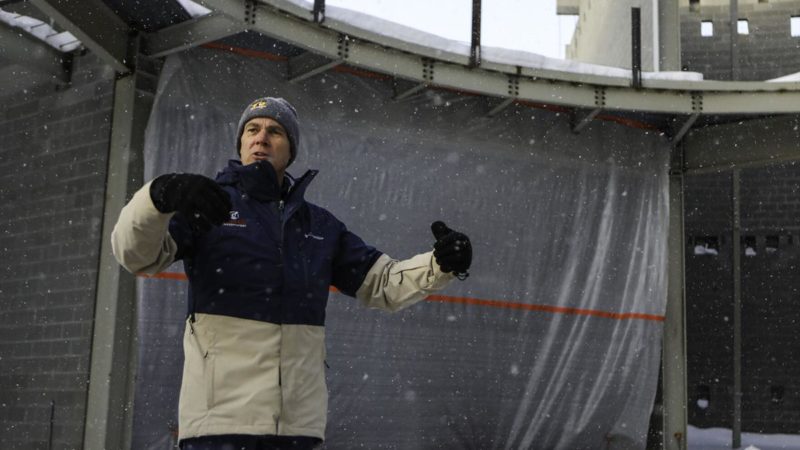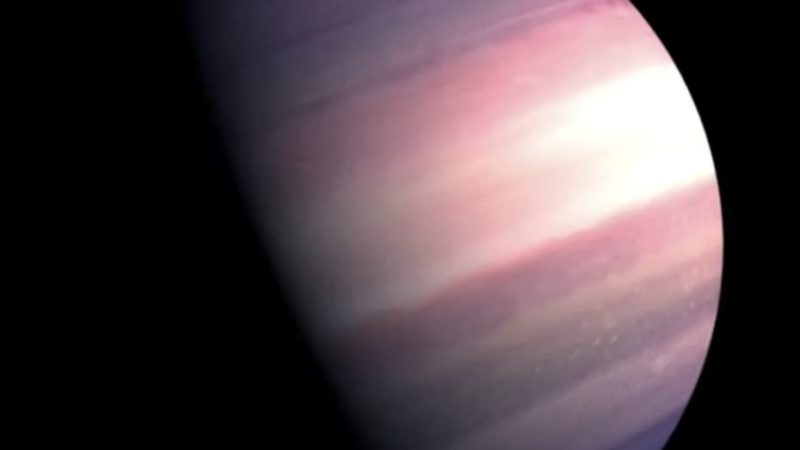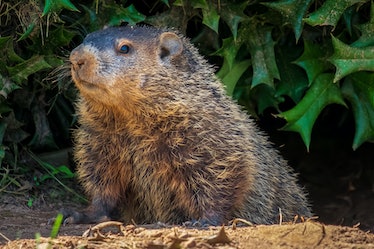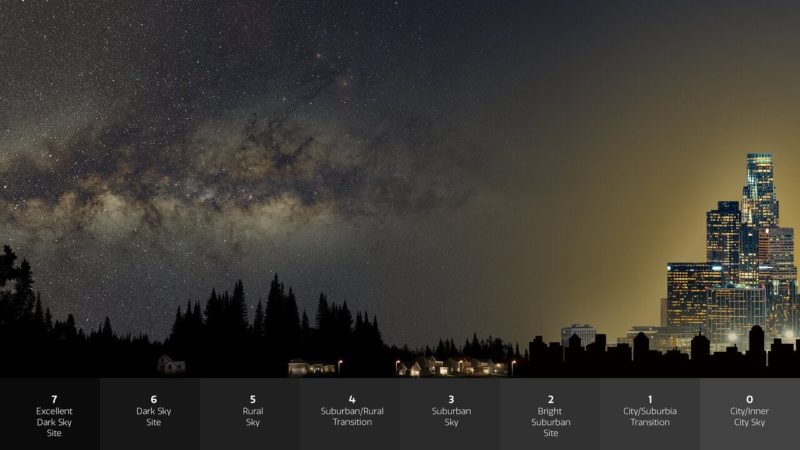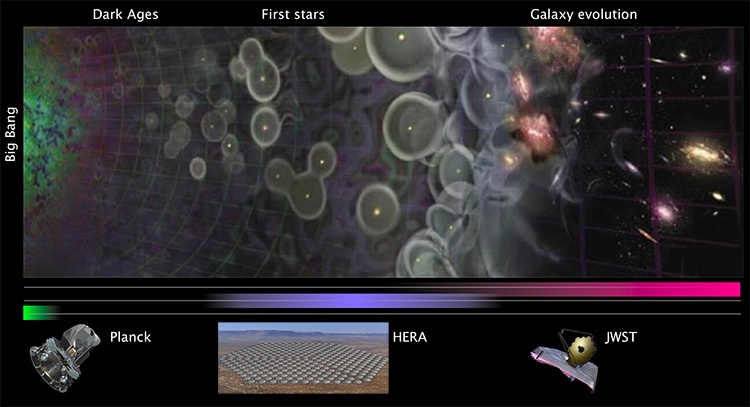We All Live In A Croissant-Shaped Giant Bubble, Say Astronomers – Forbes
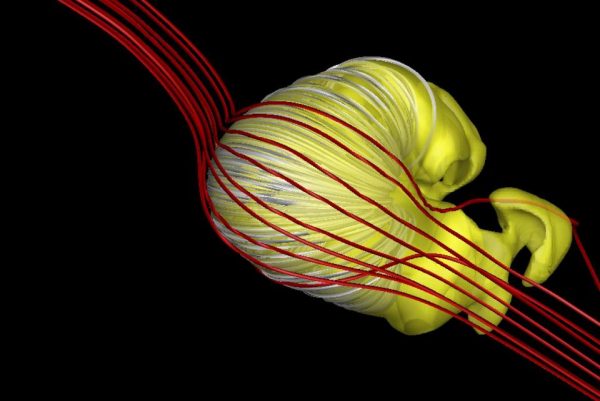
Is this what the heliosphere looks like? New research suggests so. The size and shape of the … [+] magnetic “force field” that protects our solar system from deadly cosmic rays has long been debated by astrophysicists.
Opher, et. al
Physicists have revealed a refined new model of the heliosphere—the vast region around the Sun extending more than twice as far as Pluto—that depicts it as a crescent-shaped magnetic force-field resembling a freshly baked croissant.
What is the heliosphere?
It’s the region of space that the Sun commands; its sphere of influence. It’s the extent of the solar wind—charged particles spewed-out by the Sun–that extends far past the orbits of the planets, creating a bubble around the Sun that accompanies it in its journey through interstellar space. At the edges of the heliosphere is where the solar wind meets the interstellar wind. It casts a magnetic force field around all the planets, deflecting charged particles that would otherwise get into the solar system … and destroy DNA.
What shape is the heliosphere?
That’s controversial. Until recently, the consensus was that the shape of the heliosphere is comet-like. It’s long been thought that the heliosphere stretches “behind” the solar system, creating a comet-like shape—with a round “nose” on one side and a long tail extending in the opposite direction. However, it’s also been described as a beachball-shape. However, according to Merav Opher, professor of astronomy and researcher at Boston University’s Center for Space Physics, and her coauthor James Drake of the University of Maryland, the helio-sphere should really now be called the helio-crescent.

This graphic shows the position of NASA’s Voyager 1 and Voyager 2 probes, outside of the … [+] heliosphere, a protective bubble created by the Sun that extends well past the orbit of Pluto.
NASA/JPL-Caltech
Where does the data come from?
Opher and Drake’s original paper in 2015 used data from NASA’s Voyager 1 spacecraft, which crossed the boundary from heliosphere to interstellar space in May 2012. They identified two giant jets of material shooting backwards over the north and south poles of the Sun that curve around in two relatively short tails toward the back; a heliosphere that looks a lot more like a crescent moon than a comet.
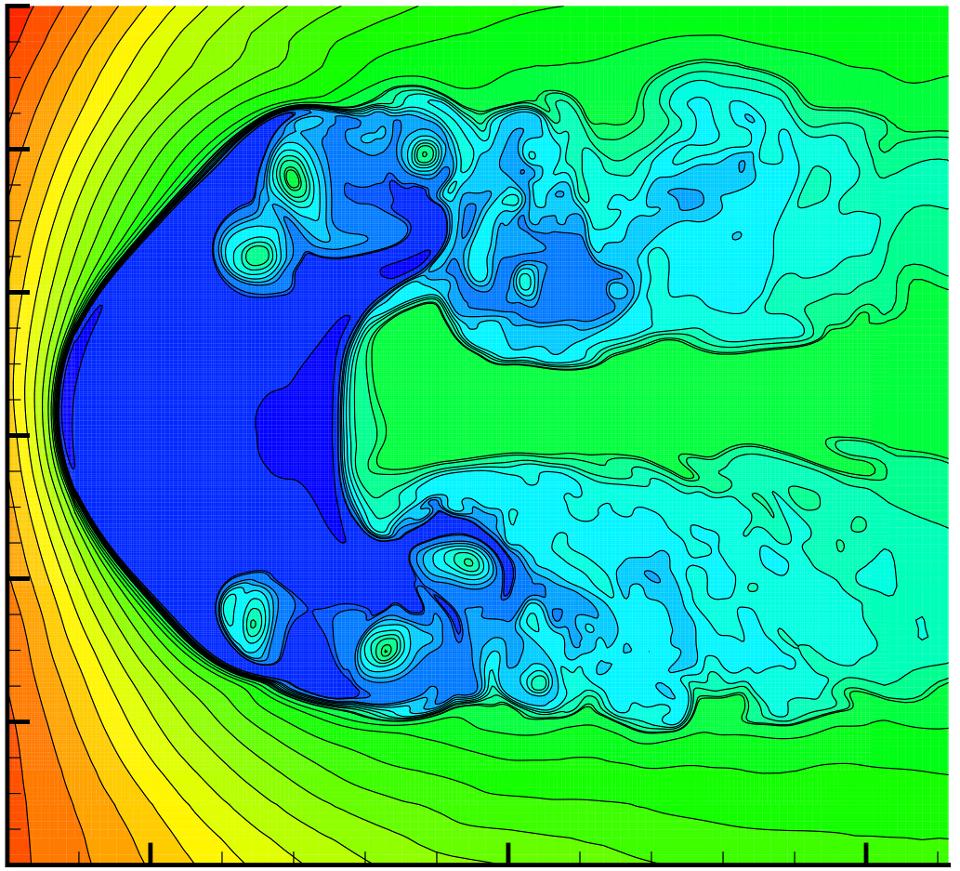
A new simulation of the heliosphere – the magnetic bubble surrounding the sun – shows it to have two … [+] relatively short jets streaming away from the nose.
M. Opher/Reproduced by permission of the AAS
What is the ‘beach ball’ model?
Opher and Drake’s research was controversial. “It was very contentious,” she says. “I was getting bashed at every conference! But I stuck to my guns.” However, in 2017 another model was proposed by scientists working on NASA’s Cassini mission at Saturn. It stated that the heliosphere is much more compact and rounded than previously thought—something like a beach ball.
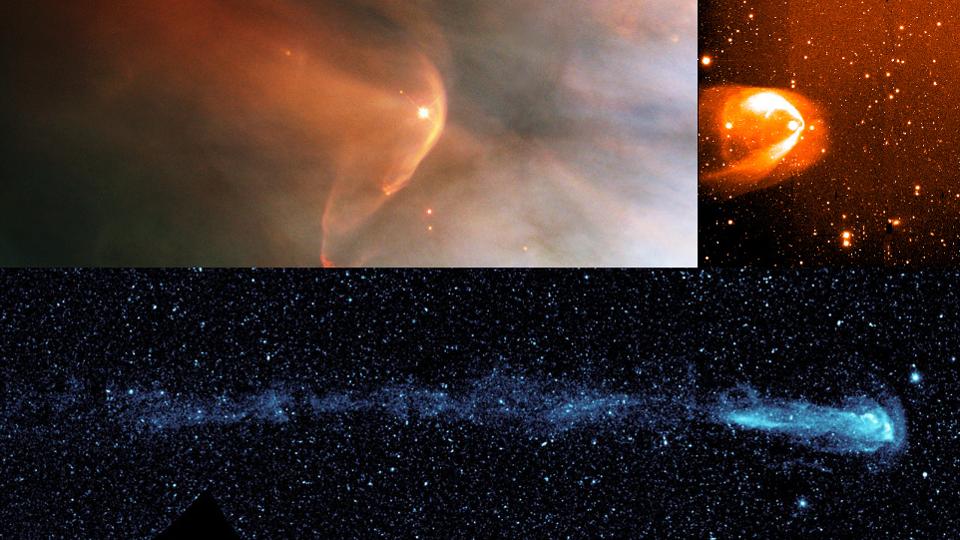
Many other stars show tails that trail behind them like a comet’s tail, supporting the idea that our … [+] solar system has one too. However, new evidence from NASA’s Cassini, Voyager and Interstellar Boundary Explorer missions suggest that the trailing end of our solar system may not be stretched out in a long tail. From top left and going counter clockwise, the stars shown are LLOrionis, BZ Cam and Mira.
NASA/HST/R.Casalegno/GALEX
What is the new ‘croissant model’?
It’s Opher and Drake’s refined theory, with colleagues Avi Loeb of Harvard University and Gabor Toth of the University of Michigan—outlined in a new paper published in Nature Astronomy—that two jets extend downstream from the nose rather than a single fade-away tail. Their new 3D model of the heliosphere—developed on NASA’s Pleiades supercomputer and supported by NASA and by the Breakthrough Prize Foundation—reconciles their “croissant” model with the “beach ball” model. It does so by distinguishing between the solar wind and incoming neutral particles that drift into the solar system; the latter get much hotter so have an outsized influence on the shape of the heliosphere. However, there is still uncertainty; it depends on exactly how you define the edge of the heliosphere.
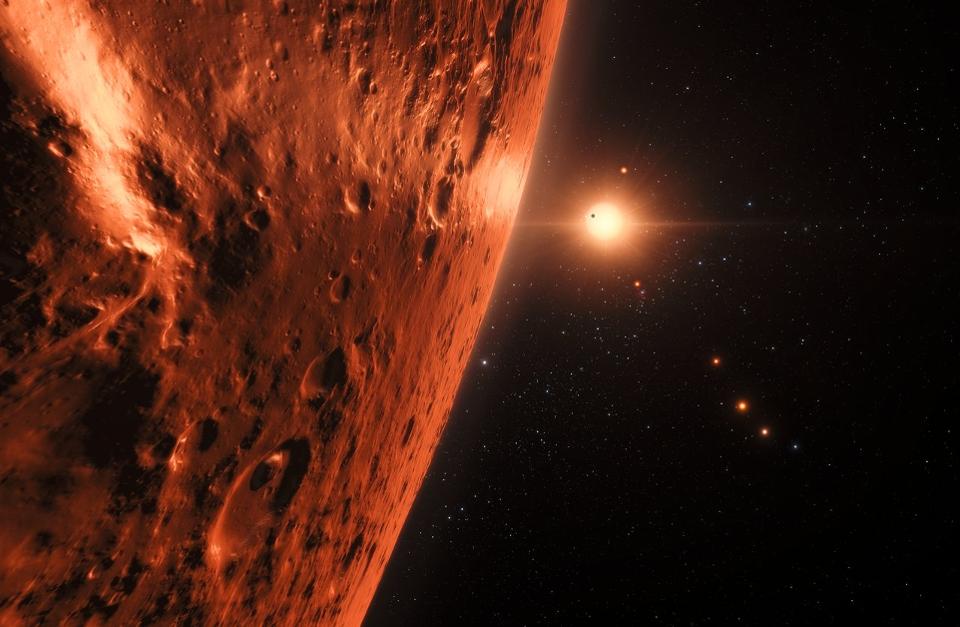
This artist’s impression shows the view from the surface of one of the planets in the TRAPPIST-1 … [+] system.
ESO/N. Bartmann/spaceengine.org
Does it matter what shape the heliosphere is?
The solar wind and the heliosphere could be key ingredients in the recipe for life in the Milky Way and beyond. “If we want to understand our environment we’d better understand all the way through this heliosphere,” says Loeb, Opher’s collaborator. Researchers studying exoplanets are keen to compare the Sun’s heliosphere with those around other stars. There’s also the DNA-shredding interstellar particles, which actually could have helped drive the genetic mutations that led to life like us, says Loeb. “At the right amount, they introduce changes, mutations that allow an organism to evolve and become more complex,” he says. “There is always a delicate balance when dealing with life as we know it. Too much of a good thing is a bad thing,” says Loeb.
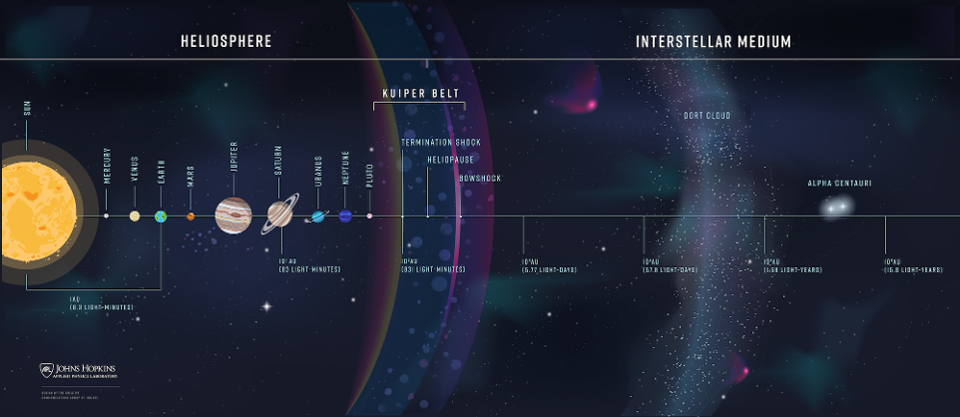
Starting in the early 2030s, the Interstellar Probe would exit the solar system.
Johns Hopkins APL
How can the shape of the heliosphere be confirmed?
We need to explore the sea of space between our Sun and other potentially habitable systems. For now, all we have are the fading 40 year old science instruments on Voyager 1 and Voyager 2. Cue plans for the Interstellar Probe, a spacecraft that could launch in the 2030s and go farther and faster than any spacecraft before it to help us understand our home in the galaxy. It would start exploring the edge of the heliosphere 10 or 15 years after that. “With the Interstellar Probe we hope to solve at least some of the innumerous mysteries that Voyagers started uncovering,” says Opher.
Wishing you clear skies and wide eyes.

